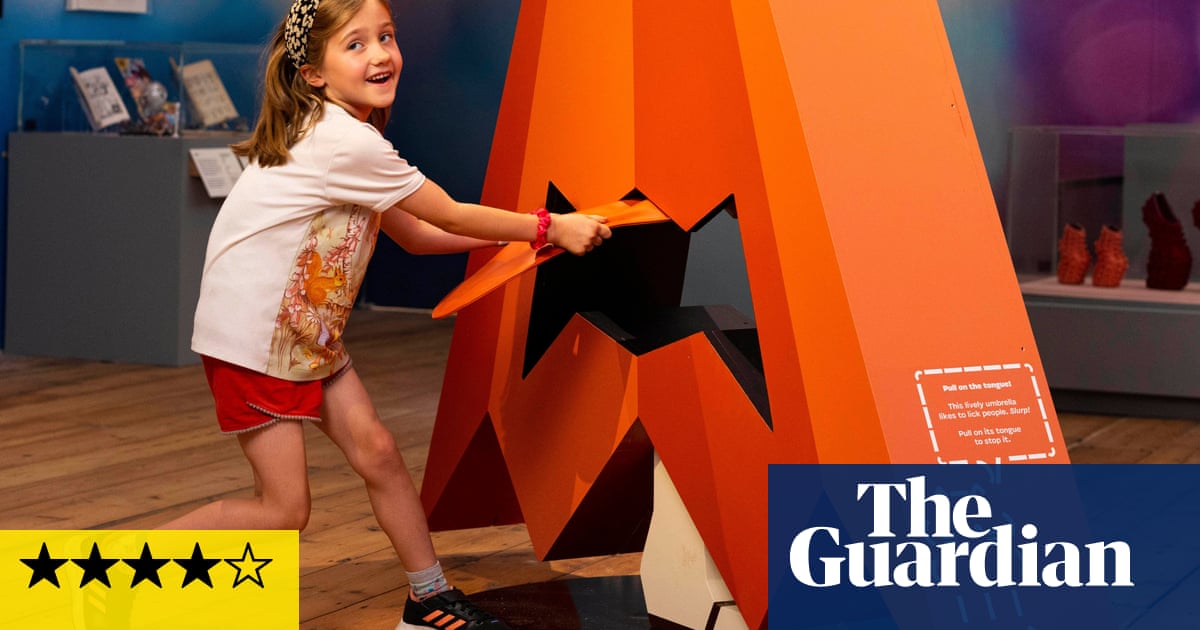
This is not your usual “why the classics are crucial” book. Helen Morales has produced a passionate, deeply felt account of the ways in which myths have reinforced the most harmful narratives of social control – or been unlocked to help lift them. It is a book infused with a lifetime’s scholarship but remains clear, approachable and very personal. It brings classics into the realm of climate activism, race politics, gender identity, body image, and #MeToo (or #metu as Morales has it, in a punning chapter heading).
Slim, punchy and galvanising, Antigone Rising brings the kind of challenge and insight that made Women and Power, by the author’s former colleague Mary Beard, such a popular success, but in its flavour and politics there is much more of the California radical – Morales is professor of Hellenic studies at the University of California, Santa Barbara – than the Cambridge realist.
The subtitle is “The Subversive Power of the Ancient Myths”. Morales does not write only about stories from mythology as such, but also about the myths the modern world has created from classical texts. One passage, for example, deals with the sex strike as a tool of resistance. This idea is often identified as deriving from Aristophanes’ comedy Lysistrata, in which the women of war-plagued Greece decide to withhold sex from their men until peace is established.
But the play, performed by a male cast to a (probably) largely male audience is a comedic fantasy, not a feminist call to arms. Activist Leymah Gbowee was labelled the “Liberian Lysistrata” after the western press picked up on the fact that the women’s movement in Liberia had staged such a strike in its efforts to end the civil war in 2002. In fact, as the Nobel laureate pointed out in her memoir, quoted here by Morales: “The truth is that the greatest weapons of the Liberian women’s movement were moral clarity, persistence and patience.” The sex strike, though attention grabbing, formed a tiny part of the struggle. Framing the Liberian women’s protest in terms of Aristophanes is, Morales argues, unhelpful – “a distorting mirror that reduces women to bodies and complex political action to titillation”. When she met Gbowee, Morales asked her what she thought about the play and the comparisons made in the press. “She said nothing but gave me a long look of unmitigated contempt.”
So much for lazy parallel-making, for placing complex actions into a constricting classical frame. Nevertheless, as Morales writes, creative readings, even misreadings, of classical texts and stories can be immensely generative. In the 19th century, gay men often saw themselves reflected in Greek literature. It mattered little that the social context in which desire operated in classical Athens was a world away from theirs. What mattered was that there were different ways of thinking about love other than those they had been told were right and natural, and that the source of these different ways of thinking was the classical world, with its immense cultural capital.
Similarly, myths that deal with a change of sex are proving intriguing today, notwithstanding the fact that stories like that of the prophet Tiresias (who turned into a woman for several years) and Caenis/Caeneus (who asked to become a man after she was raped by the god Neptune), often need to be read against the text if they are to be seen as affirming of trans experience. Morales shows how Ali Smith’s novel Girl Meets Boy, her gorgeous rewriting of the myth of Iphis and Ianthe (in which the former is transformed into a man), opens up and plays with Ovid’s Metamorphoses in a way that’s both fond and irreverent, playful and critical.
Creative misreadings and deliberate subversions are in fact central to the classical tradition in the sense that the Greeks and Romans themselves did it all the time. The essence of classical mythology is its mutability; the myths have no canonical versions. They have always existed in order to be activated – by being reread and repurposed by writers and readers. There were multiple versions of the Medea story, for example. In many of them, the Colchian princess did not kill her children – though that killing is, to readers in the modern world, an indelible part of her narrative owing to the brilliance and popularity of Euripides’ play Medea.
Euripides also wrote Helen, in which the face that launched a thousand ships was actually a phantom made of clouds created by the gods. In this version, the real Helen sits out the war in Egypt. That this tale is radically different from what most people have always understood as the story of the Trojan war does not make it any less of a Greek myth.
Many Greek myths are, frankly, depressingly misogynist. You will be hard pushed to find a positive paradigm for a stepmother, for example. Take your choice: what about Ino, who advised her husband to sacrifice to Zeus the children from her husband’s first marriage? (The children, Phrixus and Helle, flew away on a golden ram, though Helle fell into the sea, giving her name to the Hellespont.) Or would you prefer Phaedra, who lusted after her stepson Hippolytus, then, after being rejected, falsely accused him of rape? This, of course, is an especially damaging myth, helping reinforce the pernicious assumption that women cannot be trusted when it comes to rape claims. There’s little idea of sisterhood, of female solidarity, in Greek mythology: literal pairs of sisters – Electra and Chrysothemis, Antigone and Ismene – are often framed in opposition to each other, the strong, powerful one versus the weak, submissive one.
Antigone – the mythical princess of Thebes who defied the law against giving her brother a proper burial – is a character who has often been creatively misread to provide a model for female activism. Morales, though, also shows the importance of heading back to the text and attending to its nuances. Sophocles’s play shows us that Antigone’s rejection of her sister’s offer of solidarity – always preferring “I” to “we” – makes her her a tricky exemplar for today’s inclusive activists. Which is not to undermine the character’s resonance: as Morales points out, Antigone’s spirit – in the most positive possible way – lives on in Greta Thunberg and Malala Yousafzai.
The long history of classics has seen it co-opted into many causes on the left and right, but it has most damagingly been used as part of a structure of thinking that underpinned European imperialism. Even the gleaming white marble of ancient statuary – which we now know to have been originally brightly painted – has been called on to reinforce white ideals of beauty; these snowy marble statues are still being pressed into service to promote white supremacy.
For some, this history dooms classics altogether. Morales, however, shows how it is possible to break classics out of this harmful frame – indeed how this is happening, all around us. A particularly uplifting section relates to the uses of the Louvre by the Carters (Beyoncé and Jay-Z) as the magnificent stage for their video for the single “Apeshit”. Beyoncé danced, gloriously, in front of the Nike of Samothrace, the great Hellenistic winged sculpture that stands at the head of the Louvre’s most imposing staircase. Nike is Greek for victory, and Beyoncé and Jay-Z’s takeover of this temple to western art was indeed triumphant. As Morales writes, at one point the video shows young black men taking the knee, alluding to the National Football League protests against police killings of unarmed black men in the US. Immediately beforehand comes a shot of a Roman copy of a famous Greek sculpture of the god Hermes, in a similar bent-knee pose.
Co-opting Hermes into a fight against racism? Why not? As Morales shows, for all that myths have often been used as a means of repression, they are only waiting to be repurposed as forces for liberation.
• Antigone Rising: The Subversive Power of the Ancient Myths is published by Wildfire (RRP £18.99). To order a copy go to guardianbookshop.com. Delivery charges may apply.












